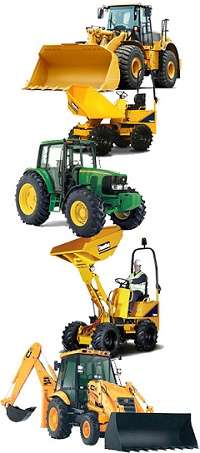WHAT YOU CAN CLAIM FOR: As a rule, the full cost of certain items can get deducted from profits before tax.
It is an accounting process called annual investment allowance (AIA).
Note: There is another cash method of accounting called cash basis. Sole traders or partners with a £150,000 (or less) income per year may find the cash basis scheme simpler to use.
What Counts as Plant and Machinery
You can claim capital allowance relief on certain types of plant and machinery. The types that can be claimed on include:
- Alterations made to a building so other plant and machinery can get installed (does not include repairs).
- Costs for demolishing plant and machinery.
- Items kept for use in the business (includes business cars).
- Parts of a building considered as integral (called ‘integral features’).
- Some fixtures (e.g. bathroom suites or fitted kitchens).
Note: A sole trader or partner should claim repairs as business expenses instead. Whereas, limited companies should deduct repairs as a business cost taken from profits.
What Does Not Count as Plant and Machinery
Businesses cannot claim capital allowances on all types of plant and machinery. This list includes those which do not count:
- Buildings (includes gates, doors, shutters, gas systems, and mains water).
- Items used ‘solely’ for business entertainment (e.g. a karaoke machine or a yacht).
- Land and structures (e.g. bridges, docks, and roads).
- Things leased by the business (it must own them).
Parts of a Building: Integral Features
Integral features which create part of a building structure can include:
- Air-conditioning as well as air cooling systems.
- Electrical systems (includes lighting systems).
- Escalators, lifts, and moving walkways.
- External solar shading.
- Hot and cold water systems (not kitchen and toilet facilities).
- Space and water heating systems.

Claiming Capital Allowances for Fixtures
You can claim capital allowance relief on most fixtures and some fittings. The list includes closed-circuit television systems (CCTV), fire alarms, fitted kitchens, and bathroom suites.
Note: You can still claim even if you rent the building (not own it). But, the person who bought the item must be the one to make the claim.
Special rules apply if you buy a building from a previous business owner. In this case, you can only claim for the integral features and fixtures that they already claimed for.
You will need to agree the value of the fixtures with the seller. You cannot make a claim unless you have an agreement. Read government guidance on ‘Plant and machinery: allowances on fixtures when there’s a change of ownership’.
There is another reason for agreeing the value. It also means the person can claim capital allowances when selling assets in the proper way.
Letting a Residential Property
You can only claim capital allowances for items in a residential property if either of these apply:
- You are running a furnished holiday lettings business.
- The item is in a common part of a residential building (e.g. a table placed in the hallway of a block of flats).
Running a Care Business
Note: Special rules apply if you run a care business. Read the guidance titled ‘Qualifying care relief for carers‘ or the HS236 Self Assessment helpsheet.
ALSO IN THIS SECTION
Claim Capital Allowances: Understand the rules and procedures of claiming capital allowance relief.
Annual Investment Allowance: Learn how to deduct the full value of an item that qualifies for AIA.
First Year Allowances: Find out which assets qualify and how to deduct the full value before tax.
Business Cars: Check how to claim capital allowances on cars bought and used by the business.
How to Claim AIA: Working out capital allowances and then claiming it using one of the methods.

